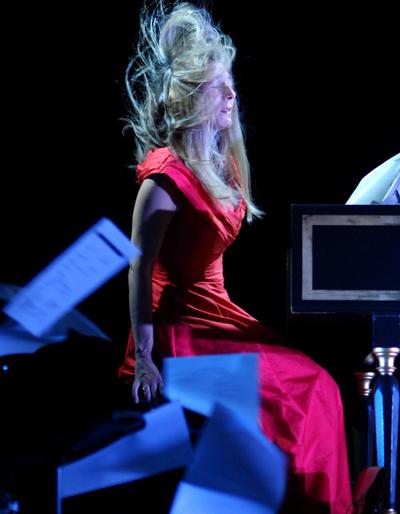Sounds of 18th century India brought back to life

The music of 18th century Indian musicians and dancers has been revived, recorded and reinterpreted for the 21st century by highly acclaimed harpsichordist and University of Southampton Turner Sims Fellow, Jane Chapman.
Jane’s research project, exploring early musical encounters between the Indian sub-continent and the West, has culminated in the release of a new CD. Her work revisits traditional compositions, which were originally staged by troupes of performers at Indian ‘nautch’ or dance parties held in the mansions of wealthy English merchants, and at the courts of the Indian Newabs (rulers).
Jane says: “The British became very interested in capturing what they had heard at colourful social gatherings, recreating performances in India, and transporting it back home to their Georgian drawing rooms. This led to some of the songs being notated and arranged for instruments they were familiar with, such as the harpsichord.”
The project began while Jane was an artist in residence at King’s College London’s Foyle Special Collections Library, working in collaboration with Katherine Butler Schofield at King’s music department and with the college’s India Institute. She studied The Oriental Miscellany – the first ever publication of Indian music written in staff notation for Western instruments, along with a collection of 77 songs compiled by 18th century harpsichordist Sophia Plowden.
The Oriental Miscellany: Airs of Hindoostan is a book of musical scores, published by conductor and concert promoter William Hamilton Bird in Calcutta in 1789. It is regarded by musicologists as an important historical source of Indian music. Some of the compositions it contains, along with Plowden’s collection, originate from the traditional folk songs of camel drivers.
Jane has now recorded and released a CD of The Oriental Miscellany, drawing from her extensive research. She comments: “I wanted the new recording to reach back to the roots of this kind of music and reflect how it would have sounded when first performed centuries ago. I collaborated with musicians from India to explore how the songs would originally have been arranged and then worked from this to develop a new interpretation.”
Jane's disc was recorded in the Music Gallery of the Horniman Museum, London, on a double manual harpsichord constructed by Jacob Kirckman in 1772 – an example of the kind of instrument that British travellers often imported for use in India.
The CD recording of The Oriental Miscellany is released on Signum Classics.
The research was funded by the Leverhulme Trust and the CD recording supported by Music at the University of Southampton. Jane Chapman is Professor of Harpsichord at the Royal College of Music and Turner Sims Fellow at the University of Southampton.